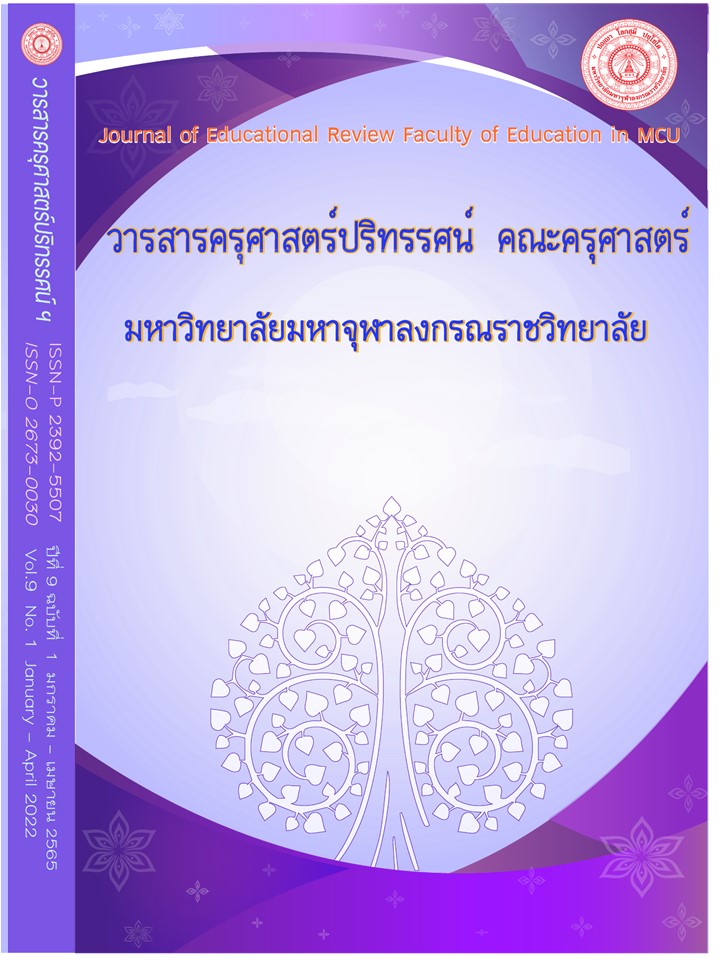TPACK FOR SCIENCE LEARNING: TPACK FOR PHYSICS LEARNING
Main Article Content
Abstract
TPACK for physics learning is come from teachers who have problems to use teaching methods and technology inappropriately. The purposes of the research were to develop and evaluate TPACK storage learning guidelines in Physics for lower secondary level. Research methodology was studying Thai and foreign researches then synthesized into Physics knowledge and concepts for lower secondary level. After that, TPACK learning guidelines were developed by choosing suitable pedagogy and technology, then writing teaching scenarios. These data developed were required exactness and appropriateness by sample expert participants; consisted of university science teachers, Physics experts from The Institute for the Promotion of Teaching Science and Technology, and educational supervisors. The research tool was questionnaire about teaching scenario assessment. Data was analyzed by descriptive statistics and content analysis. The research findings are as follows: 1) There are 2 main concepts in Physics for lower secondary level; energy and force and motion. Main concepts can be divided into 8 sub concepts. Each of sub concept has 2 pedagogies and 2 technologies. A total of TPACK learning guidelines is 32 learning guidelines. 2) Most of experts considered that Physics teaching scenarios are appropriate at high and the most high levels. TPACK learning guidelines will be increased learning efficiency.
Article Details

This work is licensed under a Creative Commons Attribution-NonCommercial-NoDerivatives 4.0 International License.
ทัศนะและความคิดเห็นที่ปรากฏในบทความในวารสารฉบับนี้ถือเป็นความรับผิดชอบของผู้เขียนบทความนั้นเพียงผู้เดียว และไม่ถือเป็นทัศนะและความรับผิดชอบของกองบรรณาธิการ
กองบรรณาธิการขอสงวนสิทธิ์ในการคัดเลือกบทความลงตีพิมพ์และจะแจ้งให้เจ้าของบทความทราบหลังจากผู้ประเมินบทความตรวจอ่านบทความแล้ว
ต้นฉบับที่ได้รับการตีพิมพ์ในวารสารครุศาสตร์ปริทรรศน์ คณะครุศาสตร์ มหาวิทยาลัยมหาจุฬาลงกรณราชวิทยาลัย ถือเป็นกรรมสิทธิ์ของคณะครุศาสตร์ มหาวิทยาลัยมหาจุฬาลงกรณราชวิทยาลัย ห้ามนำข้อความทั้งหมดหรือบางส่วนไปพิมพ์ซ้ำ เว้นเสียแต่ว่าจะได้รับอนุญาตจากมหาวิทยาลัยฯ เป็นลายลักษณ์อักษร
References
กระทรวงศึกษาธิการ. (2551). หลักสูตรการศึกษาขั้นพื้นฐาน พุทธศักราช 2551. กรุงเทพมหานคร: โรงพิมพ์องค์การรับส่งสินค้าและพัสดุภัณฑ์.
นันทวัน พัวพัน. (2562). การพัฒนารายวิชาการสอนแนวใหม่ที่ส่งเสริมความรู้เนื้อหาผนวกวิธีสอนและเทคโนโลยีของนักศึกษาครูวิทยาศาสตร์: การวิจัยปฏิบัติการเชิงวิพากษ์แบบมีส่วนร่วม. ดุษฎีนิพนธ์การศึกษาดุษฎีบัณฑิต. มหาวิทยาลัยนเรศวร.
วิจารณ์ พานิช. (2555). วิถีสร้างการเรียนรู้เพื่อศิษย์ในศตวรรษที่ 21. กรุงเทพมหานคร: ตถาตาพับลิเคชั่น.
UNESCO. (2010). UNESCO ICT Competency framework for teachers In (Vol.20). From http://www.unesco.org Retrieved January 10, 2019.
OECD. (2010). OECD indicators Education at a Glance 2010. From https://www.voced.edu.au Retrieved January 8, 2019.


